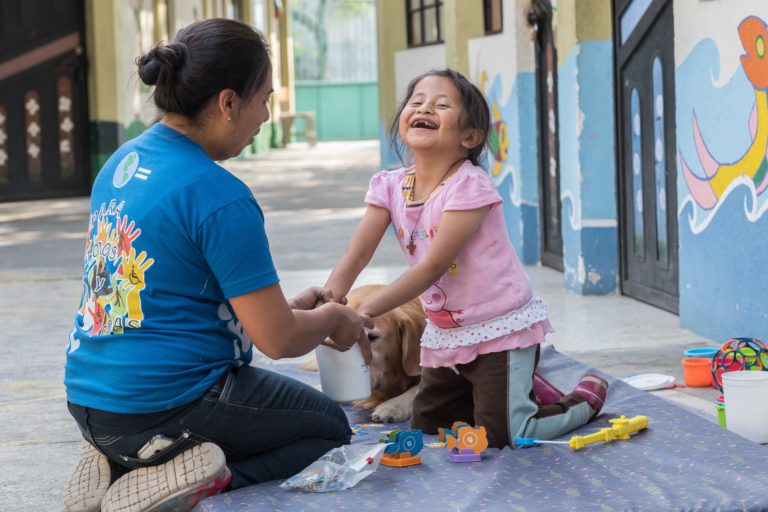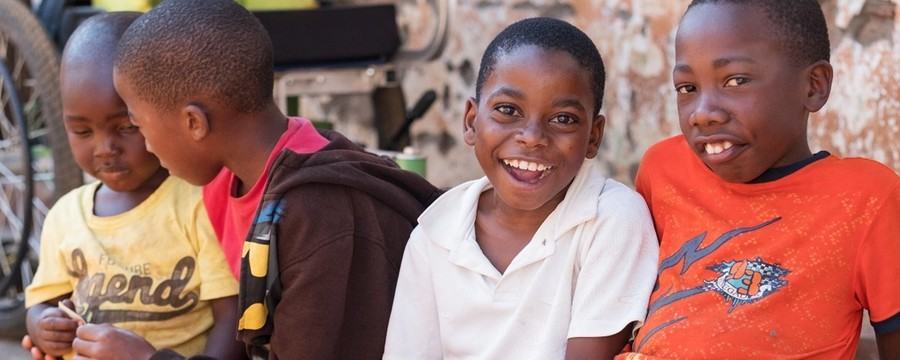Challenges to healthcare access for children with developmental disabilities

Share this step
In this step, we will discuss the barriers to healthcare access across the health journey for children with developmental disabilities.
Before we begin to discuss the challenges that children with developmental disabilities have in accessing healthcare, we must emphasise that all people (particularly in low- and middle-income countries) experience barriers to healthcare. These barriers could be physical, financial or attitudinal. Unfortunately, people with disabilities may face additional difficulties in seeking mainstream healthcare and specialist services, despite their greater need.1 Although access to healthcare is a fundamental right for people with disabilities (as recognised in the UNCRPD), this group is currently being left behind.
Barriers across the healthcare journey
It’s important to remind ourselves that children with developmental disabilities are a diverse group (including those with physical, sensory and intellectual impairments) and the barriers to healthcare that they will experience are not uniform. Barriers will vary in different geographic and cultural settings, whether the child is a boy or girl, rich or poor, and as a result of different local and national policies.2 The type and severity of impairment can also influence a child’s likelihood of experiencing different barriers.
Barriers to healthcare can occur across the healthcare spectrum, from health promotion to rehabilitative services,1,2 and across the health seeking journey (below), from:
- Perceiving that there is a health need
- Their decision to seek care
- Travel to the healthcare facility
- Consultation with a healthcare professional
- The healthcare consequences (e.g. referral to another service).
Example
Let’s follow one of our case study characters along this journey: Lucas is seventeen years old and has autism. He lives with his grandmother in Brazil. In this scenario, he needs to seek dental treatment as he has tooth pain.
As we think about his healthcare journey, from realising he has a problem, to effectively having treatment, consider how the questions posed may impact Lucas’ ability to access the service.

Figure 1. Healthcare journey (adapted from Levesque’s conceptual framework of healthcare access)3
Barriers to healthcare access
Having thought a little about Lucas’ journey, let’s now consider the barriers that can impact children with developmental disabilities across this healthcare journey in more detail.
Physical barriers
Perhaps the most straightforward barrier to consider arises from limited physical access to a healthcare service. A common example would be that there is no ramp to the entrance, lack of railings or lack of lighting. Entering the building is not the only problem, and barriers can occur when trying to move around the building, use the toilet or be examined by the healthcare professionals (e.g. inaccessible examination bed). Inaccessible furniture, equipment, toilets and doorways within the building will therefore also present barriers.
Transportation is another major barrier, especially for children with physical impairments, who may not be able to access public transport easily.
Informational barriers
Children with intellectual, sensory or communication impairments may require adjustments to the way in which information is given and received. If information is not provided in an accessible manner (e.g. braille, sign language or simple language formats) children may miss out on information about a health visit or their healthcare options, or may not be able to communicate their specific needs.
 Azucena Tzina Sicay (6) receiving dog therapy with Andrea in Guatemala. © CBM/argum/Einberger
Azucena Tzina Sicay (6) receiving dog therapy with Andrea in Guatemala. © CBM/argum/Einberger
Attitudinal barriers
Children with developmental disabilities are vulnerable to stigmatising attitudes and discrimination. Stigma often results from a lack of understanding, and can lead to neglect, judgements and misconceptions about children with developmental disabilities. Being victims of stigma and discrimination, especially if experienced in a healthcare setting, may discourage children and their families from attending healthcare services or may cause mistrust of healthcare professionals. Negative attitudes or preconceptions of healthcare providers can also mean that children and adolescents may be excluded from universal healthcare programmes, such as sexual and reproductive education, if healthcare professionals assume that they will not need these services.
Financial barriers
As we will discuss later in the course, children with developmental disabilities are more likely to come from poorer households. Healthcare costs, such as transport, treatment and medication, can be difficult for many families to afford. As a consequence, children with disabilities and their families are more likely to experience catastrophic health expenditures.
 Ripon (7) taking part in physiotherapy in Bangladesh. © CBM/Patwary
Ripon (7) taking part in physiotherapy in Bangladesh. © CBM/Patwary
Lack of available services
A lack of nearby facilities, or lack of accessible, affordable transport, may make it difficult for children and their families to access health services. Inaccessibility may also arise from a lack of awareness about available services. These barriers may also exist for children without disabilities, but may be heightened for children with disabilities, as they may require a greater range of services, including specialist services, which can be located far away.
As we have discussed previously, the availability of disability-specific health services is a major issue in many low- and middle-income countries.
Lack of coordination
A lack of coordination between healthcare providers can be detrimental to a child’s healthcare access. Children with developmental disabilities may need to visit a number of different services and specialists, but if referral pathways, communication and information sharing is not coordinated between these services, children and their families will struggle to find access.
 © CBM
© CBM
Take a look at Levesque’s framework graphic in the ‘See Also’ section at the bottom of the page to see more examples of factors affecting access to healthcare.
In the coming steps, we will hear from parents, persons with disabilities and healthcare professionals, as they discuss barriers to accessing healthcare and possible solutions.
Discussion
We’d like you to think about healthcare services in your setting. Are there any issues that make it difficult for children with developmental disabilities to access services?
Once you have identified any challenges, think about what could be changed to improve accessibility.
We look forward to hearing your ideas!
Share this
Integrated Healthcare for Children with Developmental Disabilities

Integrated Healthcare for Children with Developmental Disabilities


Reach your personal and professional goals
Unlock access to hundreds of expert online courses and degrees from top universities and educators to gain accredited qualifications and professional CV-building certificates.
Join over 18 million learners to launch, switch or build upon your career, all at your own pace, across a wide range of topic areas.
Register to receive updates
-
Create an account to receive our newsletter, course recommendations and promotions.
Register for free







